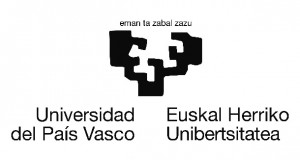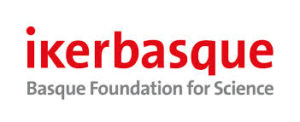39. Sławomir J. Grabowski, “Tetrel Bonds with π-Electrons Acting as Lewis Bases—Theoretical Results and Experimental Evidences”, in Tetrel Bonds, edited by Steve Scheiner, printed Edition of the Special Issue published in Molecules, MDPI, Basel, pp. 225-240 (2023). ISBN: 978-3-0365-0236-6 (Hbk) / 978-3-0365-0237-3 (PDF)
38.J. M. Mercero, R. Grande-Aztatzi, J. M. Ugalde, M. Piris, “Natural Orbital Functional Theory Studies of All-Metal Aromaticity. The Al3 anion”, in Advances in Quantum Chemistry Vol. 88, edited by Phylip E. Hoggan, Chapter 13, pp. 229-248 (2023). ISBN: 978-0-443-18663-9. DOI: 10.1016/bs.aiq.2023.02.006
37. Jose M. Mercero, Jesus M. Ugalde, “Electron delocalization in clusters”, in Atomic Clusters with Unusual Structure, Bonding and Reactivity, edited by Pratim Kumar Chattaraj, Sudip Pan, Gabriel Merino, Chapter 2, pp. 19-39 (2023). ISBN: 978-0-12-822943-9. DOI: 10.1016/B978-0-12-822943-9.00013-9
36. David Casanova, “Electronic Structure Characterization of Diradicaloids with Spin-Flip (SF) Methods”, in Diradicaloids, edited by Jishan Wu, Jenny Stanford Publishing, New York, USA, Chapter 2, pp. 83-144 (2022). ISBN: 9789814968089. DOI: 10.1201/9781003277248
35. Sławomir J. Grabowski, “Hydrogen Bond and Other Lewis Acid–Lewis Base Interactions as Preliminary Stages of Chemical Reactions”, in Gulliver in the Country of Lilliput, An Interplay of Noncovalent Interactions, edited by Ilya G. Shenderovich, printed Edition of the Special Issue published in Molecules, MDPI, Basel, pp. 157-174 (2021). ISBN: 978-3-0365-0430-8 (Hbk) / 978-3-0365-0431-5 (PDF)
34. De Sancho D., Muñoz V., “Prediction of Folding and Unfolding Rates of Proteins with Simple Models”, in Protein Folding Methods in Molecular Biology, edited by Victor Muñoz, Humana, New York, NY, vol 2376 (2022). ISBN: 978-1-0716-1715-1 / 978-1-0716-1716-8. DOI: 10.1007/978-1-0716-1716-8_20
33. Casademont-Reig I., Ramos-Cordoba E., Torrent-Sucarrat M., Matito E., “Aromaticity descriptors based on electron delocalization”, in Aromaticity, Modern Computational Methods and Applications, edited by Israel Fernández, Elsevier, The Netherlands, pp. 235-259 (2021). ISBN-10: 0128227230, ISBN-13: 978-0128227237. DOI: 10.1016/B978-0-12-822723-7.00007-8
32. Sławomir J. Grabowski, “Understanding Hydrogen Bonds: Theoretical and Experimental Views”, pp. 1-471 (2021), The Royal Society of Chemistry (United Kingdom), ISBN: 978-1-78801-479-3. (https://pubs.rsc.org/en/content/ebook/978-1-78801-479-3)
31. I. Mitxelena, M. Piris, Jesus M. Ugalde, “Advances in Approximate Natural Orbital Functional Theory”, in State of The Art of Molecular Electronic Structure Computations: Correlation Methods, Basis Sets and More, edited by Philip Hoggan and Ugo Ancarani, Adv. Quantum Chem. 79 (2019)
30. S. J. Grabowski, “Noncovalent Interactions in Crystal Structures: Quantifying Cooperativity in Hydrogen and Halogen Bonds“, pp 673-718 (2018), Chapter 19 in “Intermolecular Interactions in Crystals: Fundamentals of Crystal Engineering”, edited by Juan J. Novoa, The Royal Society of Chemistry (United Kingdom), ISBN 978-1-78262-173-7
29. S. J. Grabowski, “Hydrogen Bonds and Halogen Bonds – A Comparative Study“, pp 478-515 (2018), Chapter 13 in book “Intermolecular Interactions in Crystals: Fundamentals of Crystal Engineering”, edited by Juan J. Novoa, The Royal Society of Chemistry (United Kingdom), ISBN 978-1-78262-173-7.
28. M. Piris, “The role of the N-representability in one-particle functional theories“, pp 261-278 (2018). Chapter 22 in “Many-body approaches at different scales: a tribute to N. H. March on the occasion of his 90th birthday”, edited by G. G. N. Angilella and C. Amovilli, Springer International Publishing, Hardcover ISBN: 978-3-319-72373-0, eBook ISBN: 978-3-319-72374-7 (http://www.springer.com/gp/
27. M. Piris, “The electron pairing approach in Natural Orbital Functional Theory“, pp 593-620 (2018) Chapter 22 in “Theoretical and Quantum Chemistry at the Dawn of 21st Century”, edited by Ramon Carbó-Dorca and Tanmoy Chakraborty, Apple Academic Press, Hard ISBN: 9781771886826, E-Book ISBN: 9781351170963 (www.appleacademicpress.com/quantum-chemistry-at-the-dawn-of-the-21st-century-/9781771886826)
26. I. Fernandez and G. Frenking, “Theoretical Studies of Metallabenzenes: From Bonding Situation to Reactivity” in ‘Metallabenzenes: An Expert View’, pp 267 (2017) L. J. Wright (Ed), Wiley-VCH, Weinheim
25. P. Alemany, D. Casanova, S. Alvarez, C. Dryzun, D. Avnir,”Continuous Symmetry Measures: A New Tool in Quantum Chemistry“, Chapter 7 in “Reviews in Computational Chemistry”, vol. 30, pp. 289-352 (2017) Eds A. L. Parrill and K. B. Lipkowitz, John Wiley & Sons, Inc., Hoboken, NJ, USA. DOI: 10.1002/9781119356059.ch7
24. Special Issue “Analysis of Hydrogen Bonds in Crystals“, Guest Editor: S. J. Grabowski, Crystals, ISSN 2073-4352 , ISBN 978-3-03842-245-7 (Hbk), ISBN 978-3-03842-246-4 (PDF).
23. S. J. Grabowski, “Hydrogen Bond and Other Lewis Acid–Lewis Base Interactions—Mechanisms of Formation” pp 245-278 (2016). Chapter of book “Practical Aspects of Computational Chemistry IV” Ed.: J. Leszczynski, M. K. Shukla , Springer. ISBN: 978-1-4899-7697-0, 978-1-4899-7699-4 (eBook), DOI 10.1007/978-1-4899-7699-4
22. S. J. Grabowski, “What Can Be Learnt from a Location of Bond Paths and from Electron Density Distribution” pp 399-433 (2016). Chapter 6 of book “Applications of Topological Methods in Molecular Chemistry” Ed.: Chauvin, R., Lepetit, C., Silvi, B., Alikhani (Eds.) , Springer. ISBN: 978-3-319-29022-5.
21. E. Jimenez-Izal, J. M. Ugalde, J. M. Matxain, “Nanocluster-Assembled Materials” pp 113-148 (2016). Chapter 4 of book “Computational Modeling of Inorganic Nanomaterials” Ed.: S. T. Bromley and M. A. Zwijnenburg. CRC Press, Taylor & Francis Group. Series in Materials Science and Engineering. ISBN: 9781466576414, 1466576413. LCCN 2016003208.
20. A. Heidenreich, “Laser Energy Deposition in Nanodroplets and Nuclear Fusion driven by Coulomb Explosion”, in “Proceedings of the 240 Conference: Science’s Great Challenges”, within book series “Advances in Physical Chemistry”, vol.157, pp.165-181. (2015). Print ISBN: 9781118959596. DOI: 10.1002/9781118959602.ch14
19. S. J. Grabowski, “What is Common for Dihydrogen Bond and H…σ Interaction—Theoretical Analysis and Experimental Evidences” pp 159-187 (2015). Chapter 6 of book “Noncovalent Forces“. Springer. ISBN: 978-3-319-14162-6 (Print) 978-3-319-14163-3 (Online). DOI: 10.1007/978-3-319-14163-3
18. S. J. Grabowski, “Cooperativity of hydrogen and halogen bond interactions” Edited by: J. J. Novoa, M. F. Ruiz Lopez. “8TH CONGRESS ON ELECTRONIC STRUCTURE: PRINCIPLES AND APPLICATIONS (ESPA 2012): A CONFERENCE SELECTION FROM THEORETICAL CHEMISTRY ACCOUNTS” in Book Series: “Highlights in Theoretical Chemistry”. vol.5, pp.59-68 (2014). ISBN: 978-3-642-41271-4; 978-3-642-41272-1. DOI: 10.1007/s00214-013-1347-7
17. M. Piris, J. M. Matxain, X. Lopez, J. M. Ugalde, “The one-electron picture in the Piris natural orbital functional 5 (PNOF5)” Edited by: J. J. Novoa, M. F. Ruiz Lopez. “8TH CONGRESS ON ELECTRONIC STRUCTURE: PRINCIPLES AND APPLICATIONS (ESPA 2012): A CONFERENCE SELECTION FROM THEORETICAL CHEMISTRY ACCOUNTS” in Book Series: “Highlights in Theoretical Chemistry”. vol.5, pp.5-15 (2014). ISBN: 978-3-642-41271-4; 978-3-642-41272-1. DOI: 10.1007/s00214-012-1298-4
16. J. I. Mujika, X. Lopez, “Protein Splicing“, Encyclopedia of Biophysics, 2013. Ed.: G. C. K. Roberts. European Biophysical Societies’ Association.
15. J. I. Mujika, X. Lopez, “Carboxypeptidase A“, Encyclopedia of Biophysics, 2013. Ed.: G. C. K. Roberts. European Biophysical Societies’ Association.
14. S. J. Grabowski, “X –H…π and X –H…σ Interactions – Hydrogen Bonds with Multicenter Proton Acceptors“, pages 497-516, Chapter 17 from the book “Practical Aspects of Computational Chemistry I”,, Eds. J. Leszczynski, M.K. Shukla, Springer Dordrecht Heidelberg London New York, (2011). ISBN 978-94-007-0918-8. e-ISBN 978-94-007-0919-5. DOI 10.1007/978-94-007-0919-5
13. Jose M. Mercero, Ivan Infante, Jesus M. Ugalde “Aromaticity in All-Metal Rings“, Chapter 16 from the book “Aromaticity and Metal Clusters”, CRC Press, Boca Raton, FL, USA, (2011) . ISBN: 978-1-4398-1334-8
12. S. J. Grabowski, J. Leszczynski, “Dihydrogen Bonds: Novel Feature of Hydrogen Bond Interactions“, Chapter from the book “Practical Aspects of Computational Chemistry, Methods, Concepts and Applications”,, Eds. J. Leszczynski, M.K. Shukla, Springer, (2009). ISBN, 9048126878, 9789048126873
11. J. I. Mujika, A. J. Mulholland, J. N. Harvey, “Computational Methods: Modelling of Reactivity in Zn-Containing Enzymes“, Chapter from the book “Computational Inorganic and Bioinorganic Chemistry. The Encyclopedia of Inorganic Chemistry”, Wiley (2009). ISBN-10: 0470699973 | ISBN-13: 978-0470699973
10. M. Piris, “Natural Orbital Functional Theory“, Chapter 14 from the book “Reduced-Density-Matrix Mechanics: With Applications to Manyelectron Atoms and Molecules”, Volume 134 of the serie “Advances in Chemical Physics”, Eds. D. A. Mazziotti, Wiley, New York (2007). ISBN: 9780471 790563
9. M. Solà, J. M. Ugalde, “Density Functional Theory“, pages 221-277, Chapter from the book “Theoretical and Computational Chemistry: Foundations, Methods and Techniques”,, Eds. J. Andrés, J. Bertran, Publications de la Universitat Jaume I, Castello, (2007). ISBN: 978-84-8021-615-9
8. T. L. Sordo, J. M. Ugalde. S. A. Vázquez, “Foundations of Statistical Mechanics“, pages 95-144, Chapter from the book “Theoretical and Computational Chemistry: Foundations, Methods and Techniques”,, Eds. J. Andrés, J. Bertran, Publications de la Universitat Jaume I, Castello, (2007). ISBN: 978-84-8021-615-9
7. J.M. Mercero, E. Valderrama, J.M. Ugalde, “Electron correlation: Quantum Chemistry’s Holy Grail” p.205-239 in ” NATO-ASI Series in Metal-Ligand interaction in molecular-, nano-, micro, and macro-systems in complex environments”. Vol. 116. Editor:N. Russo, D. R. Salahub and M. Witko. Editorial: Kluwer. New York (USA), (2003 )ISBN 10: 1402014945 / 1-4020-1494-5
ISBN 13: 9781402014949
6. J.M. Ugalde ” The electron-pair density and the modeling of the spherically averaged exchange-correlation hole“, p. 651-695 in ”Computational Methods in Sciences and Engineering” Editor: T. E. Simos. Editorial: World Scientific. Singapore. (2003).
5. X. Lopez, J. M. Ugalde, L. Echevarria, E. V. Ludeña “Hookean models for few-body systems in chemistry and physics” in ”New Developments in Quantun Chemistry ”. Editores: J. L. Paz, A. J. Hernández. Research Signposts, Singapore. En prensa.
4. E. Valderrama, X. Fradera, I. Silanes, J.M. Ugalde, R. J. Boyd “Electron correlation studies by means of electron-pair density functions” p.577-611 in ”Reviews in Modern Quantum Chemistry. A Celebration of the contributions of Robert G. Parr” Editor: K.D. Sen. Editorial: World Scientific. Singapore. (2002)
3. E. Valderrama, J.M. Ugalde, R.J. Boyd “Intracules and extracules densities: Historical perspective and future prospects” p.231-248 in ”Many-electron densities and reduced density matrices. Editor: J. Cioslowski, Editorial: Kluwer Academic/Plenum Publishers, Holanda. (2000).
2. C. Sarasola, X. Lopez, J.M. Ugalde “Screening effects on the electronic structure of atoms and molecules” in ”Electronic Structure: Prediction and Applications” editores: J.M. Ugalde, A. Irigoras; (1997).
1. R.J. Boyd and J.M. Ugalde “Analysis of the wave function in terms of one and two-electron density functions” in “Computational Chemistry. Structure, Interaction and Reactivity” Editor : S. Fraga, editorial: Elsevier. Amsterdam (1992)


